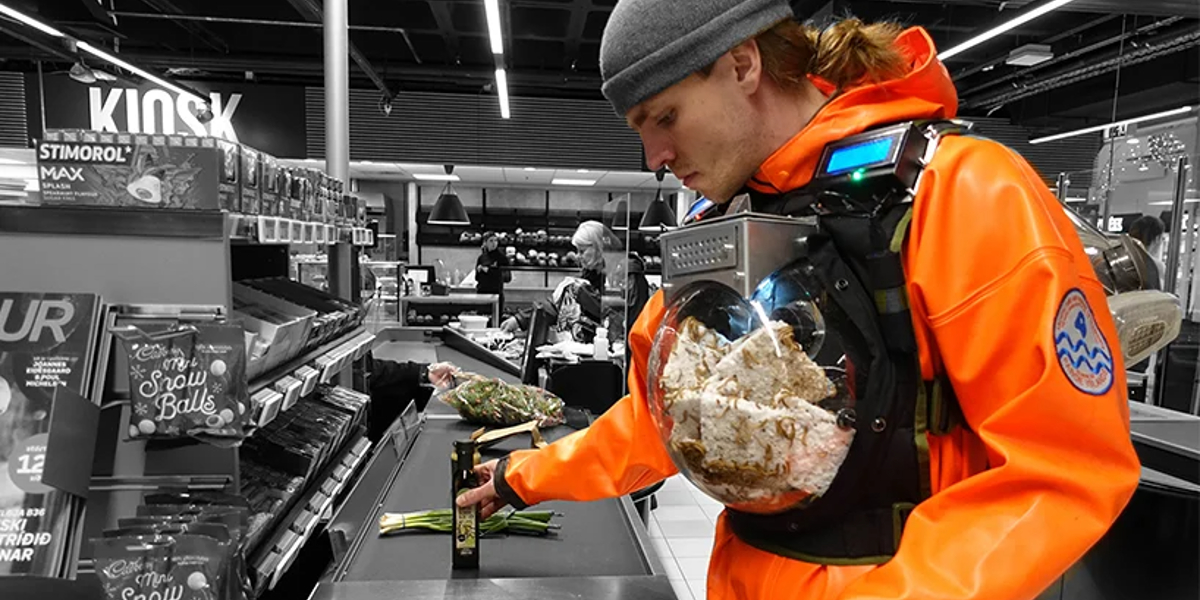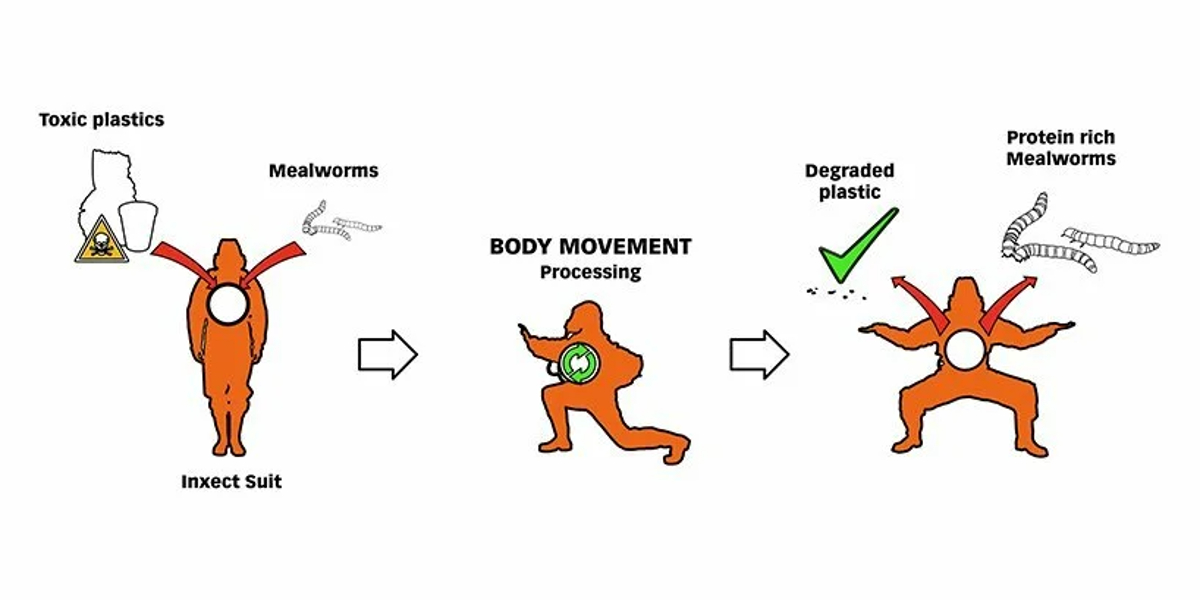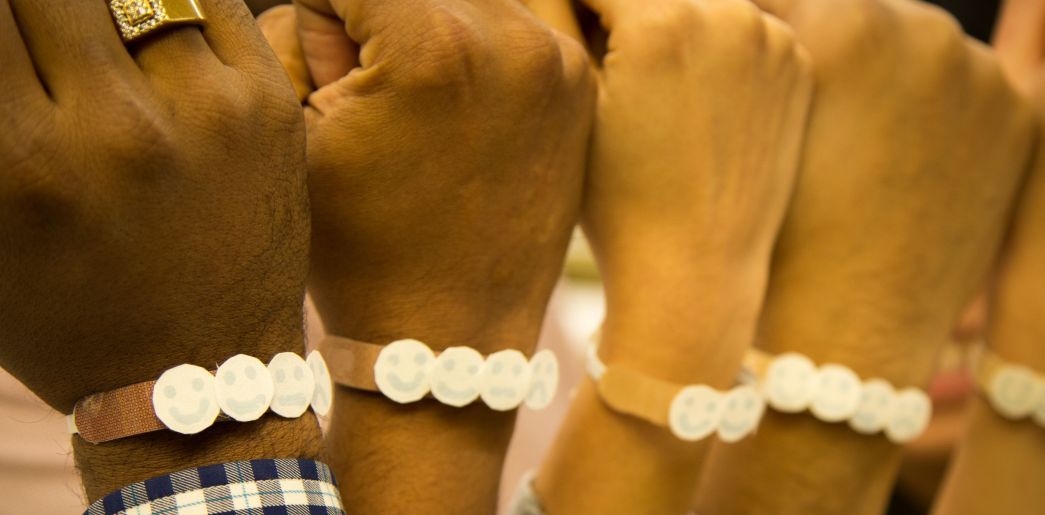AÑO
2023
CATEGORÍA
Cuerpo
OBJETIVOS
Ciudades y comunidades sostenibles, Producción y consumo responsables
PAL. CLAVE
mealworms, power plant, suit, waste, pollution
PAÍS
Denmark
CRÉDITOS
Pavels Liepins
LINK
https://inxects.com/
Inxect Suit
A suit that turns the human body into a waste management power plant.
How does it work?
It is a low-carbon, wearable protein harvesting and plastic waste management system povered by human emissions and mealworms. It creates a symbiosis between the human body and the worms. The suit provides a habitat for mealworms sheltered by a terrarium and human body heat released from movement, employing the insect to safely consume and digest toxic plastic waste and break them down into high-quality edible proteins. The suit consists of an enclosed PVC membrane lined with sheep wool, ensuring minimal heat loss from the human body. The suit shields the wearer from wind, rain, radiation, toxic waste and airborne pathogens, making it ideal for operations in extreme environments.
Why is it needed?
The proposal addresses some of the most extreme environmental challenges humanity will meet in the year 2100, such as food security, sea level rise, housing and plastic pollution. According to a 2019 study carried out at Stanford University, researchers found that mealworms have the ability to safely eat and digest plastics without storing any toxic components in their bodies as a solution to reduce plastic pollution. Insect can provide low-carbon and protein rich alternative to meat. Their drippings can be used as fertiliser and biofuels. Mealworms povered by human emissions can break down 3-5 milligrams of polystyrene per hour, a colony of 100 mealworms can break down 39 milligrams of polystyrene in a day.
How does it improve life?
The suit created a mutualistic symbiosis where humans and mealworms can coexist, emphasizing the human body as a power plant generating heat through movement and utilizing mealworms as an underpinning solution to both future food security and plastic pollution.





